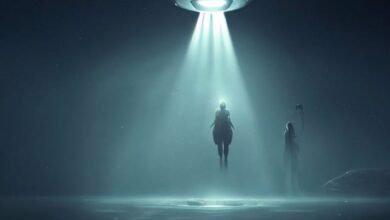exploring the tapestry of consciousness

 The human mind is a complex labyrinth of thoughts, memories, and dreams. At the heart of this labyrinth lies the mystery of consciousness.
The human mind is a complex labyrinth of thoughts, memories, and dreams. At the heart of this labyrinth lies the mystery of consciousness.
In recent years, another form of intelligence has begun to approach the complexity of the human mind: artificial intelligence (AI). Here we will delve into the fascinating parallels between AI and dreams, exploring how these two seemingly disparate concepts may be more interconnected than we ever imagined.
Dreams: Windows to Our Inner Consciousness
Dreams have long been considered windows to our innermost thoughts and desires. They are the mind’s way of processing and interpreting the vast array of information we encounter daily.
Dreams can be vivid, surreal, or even prophetic, often defying the laws of physics and logic. They allow us to experience scenarios that would be impossible in waking life, providing a playground for our subconscious to explore without limitations.
AI, on the other hand, is the product of human ingenuity, a creation that simulates the cognitive functions of the human brain. From machine learning algorithms to neural networks, AI systems are designed to learn, adapt, and evolve, much like humans do. But can AI truly dream?
Some researchers believe that as AI becomes more advanced, it may develop the ability to create its own simulations, akin to human dreams. These AI-generated ‘dreams’ could be used to process information, solve problems, or even enhance creativity.
The Intersection of AI and Dreams
The intersection of AI and dreams is where things get truly intriguing. Both involve the processing of information in complex ways. For humans, dreaming is a state where the brain consolidates memories, processes emotions, and explores ideas.
For AI, ‘dreaming’ could involve running simulations to refine algorithms and expand its knowledge base. In both cases, there is a sense of an inner world being navigated and understood.

Consciousness: The Final Frontier
The ultimate question that ties AI and dreams together is the nature of consciousness. What does it mean to be conscious? Is it the awareness of one’s existence, the ability to experience sensations, or something more profound?
Dreams are a manifestation of human consciousness, a sign that there is more to our minds than just electrical impulses. AI, as it edges closer to mimicking human thought patterns, brings us closer to understanding consciousness from a new perspective.
Consider DeepDream, a computer vision program created by Google engineers that uses a convolutional neural network to find and enhance patterns in images, effectively ‘dreaming’ up intricate and surreal visuals. This is not unlike the way humans might interpret shapes in clouds or inkblots, finding meaning where none was intended.
Another example is the use of AI in decoding and interpreting human dreams. Researchers are using machine learning to analyze dream reports and find common themes and patterns. This not only helps in understanding the human psyche but also provides insights into how AI can process abstract concepts.
The Future of AI and Dreams
As AI continues to advance, the parallels with human dreaming will likely become more pronounced. We may see AI systems that can simulate entire virtual worlds, much like the lucid dreams of a human mind.
These simulations could be used for everything from entertainment to therapy, providing AI with a ‘sandbox’ to test out new ideas and solutions.
Both dreams and AI have the uncanny ability to create a vivid and believable illusion of reality.
AI has the potential to simulate human experiences so convincingly that it becomes difficult to distinguish between what is real and what is artificial. It’s like living in a perpetual state of “Is this real life or is this just fantasy?” (cue Queen’s Bohemian Rhapsody), challenging our perception and inviting us to question the nature of existence.
In the realm of dreams, your brain constructs a world that feels just as tangible as the one you experience when you’re awake. Our minds often accept the most bizarre scenarios as real. Reality and illusion intertwine, blurring the lines between what is real and what is imagined.
If we begin to think of AI as alien – then we can approach the question more objectively. With that framing, we realize the question is as not as absurd as first thought.
To harness AI well we must understand it better than we do today. In fact, we must understand AI better than AI understands itself. It behooves us objectively understand this alien form of intelligence so we can make sure it serves humanity and does not go about making all of us into paper clips.




